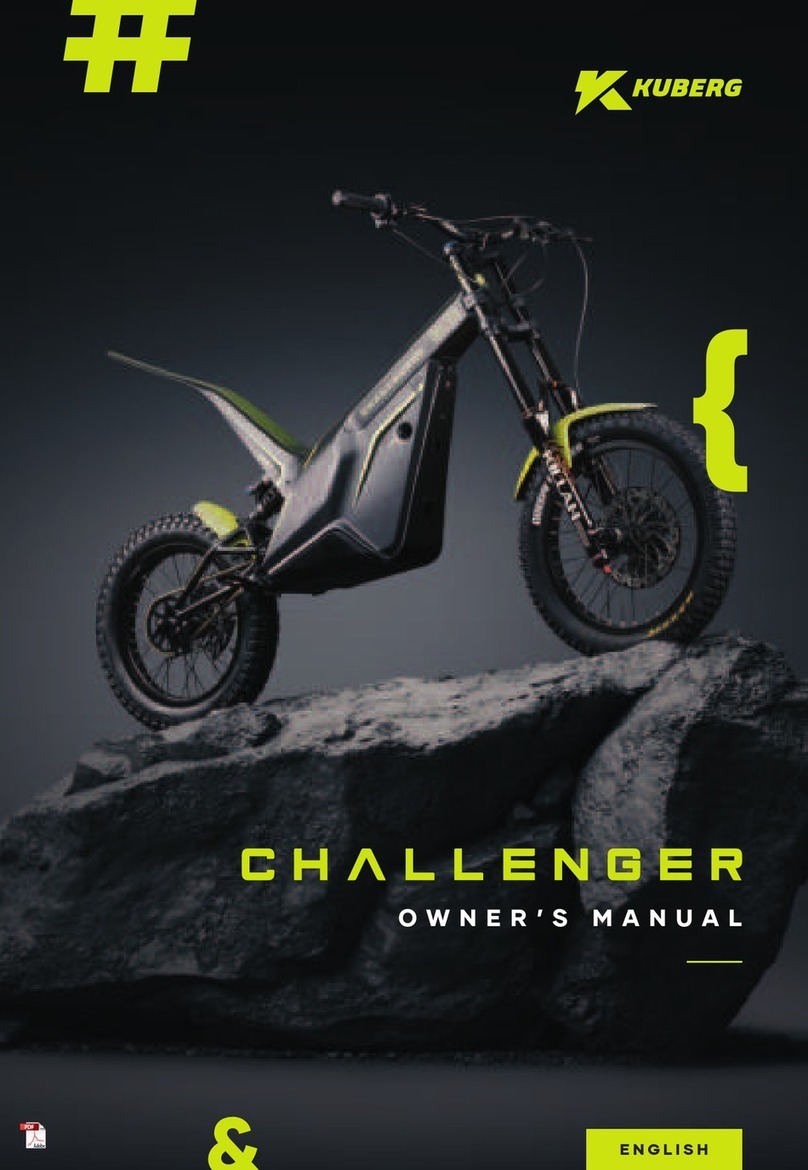
4Passers-by may not hear you approach – so extra caution should be taken.
5Make yourself conspicuous in order to reduce the chance of other vehicle users
or pedestrians being unaware of you approaching.
6Be aware that your motorcycle is still ON when stopped and while at an “idle”.
WARNING!
Accidental twisting the throttle can cause serious harm.
Safe riding practices
1SINGLE OPERATOR ONLY! No passengers!
2Long hair, loose clothing or items worn by the rider must be covered to prevent
entanglement in moving parts of the vehicle or the surroundings whilst riding
3Do not exceed the weight limit. Heavier riders may significantly reduce performance
and/or render the vehicle unstable and/or over-tax the brakes and other control
devices. Heavier riders may cause structural damage not covered by the warranty.
4Do not touch any moving or hot parts.
5DO NOT RIDE AT NIGHT OR UNDER LOW VISIBILITY CONDITIONS, if your KUBERG
Ranger is not equipped with the light kit (sold separately).
6Do not immerse this vehicle in water.
7Do not combine regen braking with regular brakes.
8BEFORE TOWING A TRAILER, GO TO PAGE 34 TO READ THE INSTRUCTIONS FIRST!
9Do not ride on steep or uneven surfaces. Steep or uneven surfaces greatly increase
the likelihood of loss-of-control.
10 Do not ride faster than the conditions permit for safe operation. Excess speed
greatly increases the likelihood of loss-of-control.
11 The rider should be securely seated on the vehicle or to have one leg on foot rail (no
seat version) ready to ride before turning the power switch on.
Ride where other motorists, pedestrians and cyclists can see you. Avoid riding in another
motorist’s blind spot. Know your skills and limits. Stay within your limits in order to avoid
an accident.
NOTE:
Many motorcycle accidents are caused by rider error. A typical error made by motorcycle
riders is veering wide on a turn due to EXCESSIVE SPEED or under cornering due to
insucient lean angle for the given speed.
WARNING!
Maintain a proper posture while riding. The posture of the rider is important for proper
control of the motorcycle. The rider should keep both hands on the handlebars and
both feet on the footrail during operation in order to maintain control of the motorcycle.
Never ride under the influence of alcohol or other drugs. Go to page 31 to find detailed
instructions concerning proper riding technique.
8 Ranger - OWNER‘S MANUAL
































